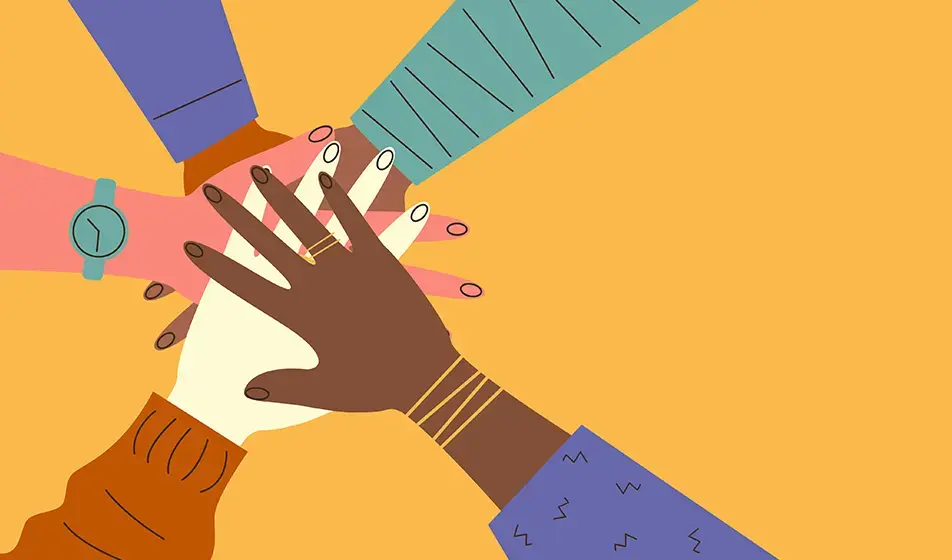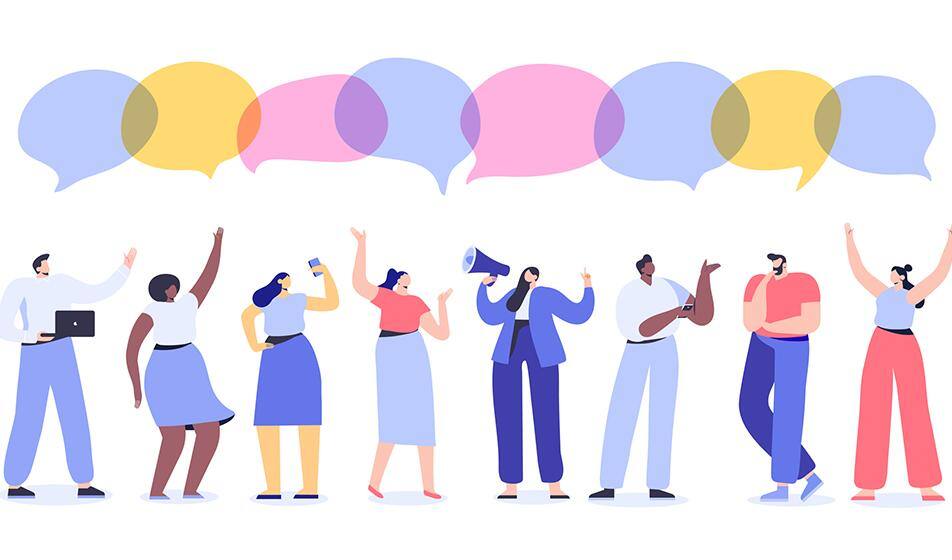E,D & I goals are all well and good - but you need to have the inclusive policies to back them up.
This blog covers what inclusivity is, why it's important, and how you can create a fair and inclusive workplace.
No doubt you’ve heard of rainbow-washing - the situation where during the month of June, Pride month, businesses demonstrate their commitment to the LGBTQ+ community by selling rainbow-themed items and using rainbows in their advertising.
There’s no problem with this if the company doing so truly supports the LGBTQ+ community. But if they don’t… it’s nothing more than a marketing ploy.
What is inclusivity?
Inclusivity is about giving everyone the same chance and making individuals of all backgrounds and preferences feel welcome. This should be the case regardless of gender, race, religion, sexual orientation, culture or background. In essence, everyone should feel safe, supported and encouraged.
And this is difficult. Because although you may be able to recruit a diverse spectrum of employees, making them feel welcome enough to stay could be more of a challenge. That’s because inclusivity is cultural. And if your business does not have an inclusive culture already in place, simply increasing your hiring diversity will not change things.
Here are a few examples of non-inclusive practices:
-
Recruiting an employee with hearing problems, without installing the hearing loop they need in order to do their job.
-
Hiring women into an all-male team, yet not providing female-friendly toilet facilities.
-
Turning a blind eye to workplace ‘banter’ that is homophobic, sexist or racist.
-
Refusing to allow Islamic employees flexibility with their working hours during Ramadan.
-
Inferring that someone does not belong, for example, ‘you’ve done really well to get to this position’, ‘where are you – I mean – your people from?’, or ‘you’re very articulate’.
Why is inclusivity important?
Inclusivity is important because of the way it allows everyone to feel secure and supported in the workplace. But it goes beyond that.
An inclusive culture with inclusive policies protects the business itself. Many examples of bullying and harassment or discrimination result from a culture that does not prioritise inclusivity.
What’s more, inclusivity helps you keep the high-quality people you want in your organisation. It allows them to feel accepted and allows them do their best work. And that’s great for productivity, creativity and minimising the costs associated with a high staff turnover and high absence rates.
How can I create a fair and inclusive workplace?
Creating a fair and inclusive workplace is not something that happens overnight. And although inclusivity – as with other cultural factors – comes from the top, even the most inclusive and well-intentioned leader could inadvertently lead an organisation with poor inclusivity credentials. Some of the things to reflect on include:
-
Ensuring everyone’s contributions are valued equally and that you don’t offering advantages to a particular person or group.
-
Being aware of unconscious bias and trying to exclude it from decision-making. External resources can help with this if you feel this needs more work.
-
Reviewing your policies – do they support attitudes or processes that could be seen as outdated? How do you ensure that when it comes to opportunities or internal promotions, no-one is automatically favoured? Discrimination can easily become part of the everyday, so it’s worth examining the culture of your organisation with a fine-toothed comb. Asking someone external to help with this can add objectivity to the process.
5 steps to creating diversity & inclusion policies in your SME
1. Talk to your employees
…And listen to what they have to say. Ensure you follow up and act on the feedback you receive. Don’t brush off negative feedback as ‘the usual complaints’, instead investigate the root cause behind these complaints and consider all comments objectively.
Creating a policy clearly shows the organisations’ stance on inclusion and fairness, allowing your employees to feel safe and protected at work.
2. Establish the policies your SME needs
The Equality Act 2010 details protected characteristics and the legal provisions around equality and discrimination.
If you’re not sure where to start, start by researching how to improve equality, diversity and inclusion within your organisation. ACAS offer valuable resources and information that can help in this.
3. Review existing policies
As well as creating new policies, consider whether existing policies need to evolve. For example your flexible working policy, holiday policy, sickness policy and uniform policy.
4. Use existing resources
There are so many resources available to help create inclusive policies. ACAS have an easy-to-adapt equality, diversity and inclusion policy template that provides a great starting point when thinking about creating inclusive policies for your organisation.
5. Educate
As we know, culture starts from the top. Continuously educating senior management to champion LGBTQ+ inclusion is essential, according to a report by the CIPD. Ensuring those who lead your organisation display your inclusive values is important, as this feeds down to the rest of your company and shapes your culture as an organisation.
What kind of inclusive policies do I need?
If you’re not sure where to start, start by researching how to improve equality, diversity and inclusion within your organisation. ACAS offer valuable resources and information that can help in this.
Breathe's network of HR Partners will be willing to offer advice
The Equality Act 2010 details protected characteristics and the legal provisions around equality and discrimination.
Creating an inclusive environment
As we know, culture starts from the top. Continuously educating senior management to champion LGBTQ+ inclusion is essential, according to a report by the CIPD.
Ensuring those who lead your organisation display your inclusive values is important, as this feeds down to the rest of your company and shapes your culture as an organisation.
Store your people-first policies securely within Breathe's ISO 27001-accredited HR software. Trial Breathe for free for 14 days.

Author: Laura Sands
Laura is a writer who enjoys getting into the detail of subjects and sharing that knowledge with snappy, interesting content. When not typing away, she enjoys walks in the woods and curling up with a good book and mug of something hot.






